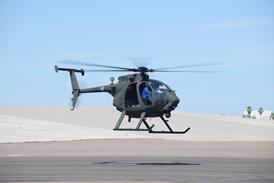Japan's Defence forces and its Maritime Safety Agency (MSA) are showing growing interest in a search and rescue (SAR) version of the V-22 Osprey, which Bell and Boeing are promoting as one of several future military variants of the tiltrotor.
Japan has opened tentative discussions with Bell Boeing on future adaptations of the V-22, as it begins looking for a replacement for the military's fleet of licence-built Kawasaki/Vertol KV107 SAR helicopters. The USA has proposed a reconfigured cabin interior for the tiltrotor transport to fulfil the military SAR mission.
The Japanese model would draw on some of the elements already developed or planned for the US Marine Corps MV-22 transport, the USAF's CV-22 special operations version and the US Navy's proposed HV-22 combat SAR variant. Features could include a multimode radar, forward-looking infrared imager, night vision goggle-compatible instruments, refuelling probe-rescue hoist and side bubble observation windows.
In place of the four NATO-standard three-tier litters, the proposed Japanese version would accommodate 11 smaller litters, two of which would be stacked sideways on the rear ramp. This would create cabin space for an additional 2,950 litre fuel tank, increasing total internal fuel capacity to 8,140kg and extending the V-22's mission radius to 1,090km (590nm).
According to Boeing V-22 new business programme manager Jaan Liiva, this would be sufficient to provide complete SAR coverage of the Japanese islands and surrounding seas from three airbases at Nyutabaru, Hiyakuri and Chitose. The tiltrotor's operational range could be further extended with probe-and-drogue refuelling from Lockheed Martin KC-130s or a planned V-22 tanker version.
Meanwhile, Japan's Tokyo metropolitan police will take delivery of its first EH Industries EH101 helicopter in September. The EH101 is also viewed as a contender to replace the KV107, along with the Sikorsky S-92 Helibus.
Source: Flight International























